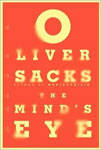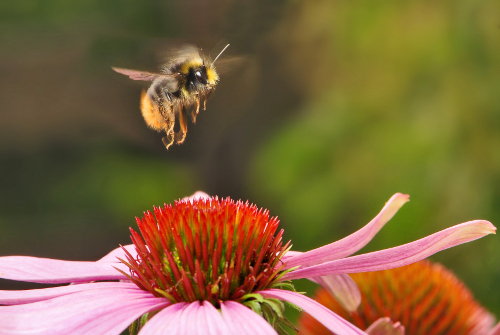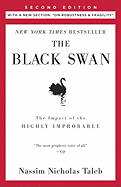As you can see, cogsci.nl has received a minor revamp of the layout. In the end I thought the previous layout (especially the grey header) was a little boring. There are now several headers, each with its own distinct color, and one is selected at random when you load a page. You can find links to the photos that I used on the about page. I will probably create some more in the future, to add to the variety. Another change is the addition of Facebook and Twitter buttons below each article.
Oliver Sacks, "The Mind's Eye"
Picador, 2010
Conclusion With “The Mind's Eye” Oliver Sacks reaffirms his reputation as one of the most eloquent chroniclers of the human brain.

More than anything else, Oliver Sacks is a storyteller. In “The Mind's Eye” he tells about people who have lost some aspect of their perceptive (mostly vision) or expressive (mostly speech) abilities. The book opens with a woman who suffers from severe difficulties in reading. Over the course of years her condition deteriorates, until her visual agnosia is so bad that she is effectively blind. Sacks gives a very personal and compassionate account of her story (as he does of the other cases described in the book), and focuses on the womans personality and the way she tries to cope with her condition, as much as he does on the neurological aspects. Sacks is also very eloquent; Almost unrivaled in this respect, I would say.

Nevertheless, after the first three chapters I was getting a little worried that the entire book would consist of case studies. Not that the stories aren't interesting, just not sufficiently so to fill 250 pages, especially since similar stories have been told before. Luckily, my worries were unfounded and about halfway the book switches from case studies to Sacks' personal quirks, hobbies and experiences. Apparently, he suffers from congenital prosopagnosia, which means that he has a very hard time recognizing faces. He describes how this mild deficit has led to some embarrassing situations (quite amusing) and goes a little bit into the …
Traveling Bumblebees
One of the most famous mathematical problems is the traveling salesman problem: Given a set of cities, how do you determine the shortest route that visits each of the cities exactly once? Of course, you can simply go through all possible routes, but this approach is feasible only for a very limited number of cities. There are more clever ways to solve the problem, but the time needed to find a solution always increases exponentially with the number of cities. In other words, there is no known efficient way to solve the traveling salesman problem.

Photo from Wikimedia Commons
It is quite cool, therefore, that bees appear to be able to solve the traveling salesman problem, as reported by Lihoreau, Chittka and Raine in a forthcoming paper in The American Naturalist. The authors made an artificial flower-arrangement. Recordings of the flight paths showed that the bees chose the most efficient route to visit all flowers. Quite a feat for such a tiny-brained animal!
I haven't read the entire paper (which is due in December, for now there is only a summary on the website of The American Naturalist), but I do wonder about a few things. One of the characteristics of the traveling salesman problem is that there are a finite number of connections and you're allowed to visit each city only once. In contrast, the bees can fly however they like and I would assume that they don't care if they have to fly over a flower that they …
Rotating colour pie
In the image below (which I have adapted from an illusion by Kitoaka) there are three greenish “spokes” rotating counterclockwise. (You can download a script to generate this type of images here.)

Or are there? Actually, the greenish and blueish areas are the same “aqua” colour. The only difference is that in the greenish areas, aqua is interspersed with orange, whereas in the blueish areas, aqua is interspersed with pink. This becomes clear if you look at the image below, in which all pink has been replaced with orange. By the way, the illusion works equally well in a static image. I just added the rotation to make it look extra cool.

Initially I thought the illusion had to do with colour opponency. There are visual neurons which respond to yellow and are inhibited by blue, and vice versa. Because pink is essentially orange with some added blue, you might think that if aqua is interspersed with pink, it becomes more “yellowish” and, conversely, if aqua is interspersed with orange it becomes more “blueish.” However, on closer inspection the illusion works the other way around: Aqua actually looks more blueish next to pink, than next to orange!
Monnier and Shevell describe an illusion which is similar to the one presented here and offer a tentative explanation. Essentially they say that the colours appear to “spill over.” That is, if aqua is next to pink it simply “borrows” some of the blue that is present in the pink. However, this …
Nassim Nicholas Taleb, "The Black Swan"
Random House, 2nd edition, 2010
Conclusion Taleb argues that we grossly underestimate the unpredictability of the world around us. Unfortunately, his potentially interesting message suffers from a chaotic presentation and a pretentious style.

One of Holland's silly traditions is that around election time an agency called the CPB (het centraal planbureau) takes the programs of the larger political parties and outputs a bunch of numbers: How many jobs will be gained/ lost over the next 40 (!) years if we follow a particular program? What will happen to the energy consumption? And what will be the effect on the level of education? These numbers are taken quite seriously, even though no attempt has ever been made to validate the predictions of the CPB. And I dare say that if any such attempt were ever made the conclusion would be that the CPB can hardly predict what will happen tomorrow, let alone in 40 years from now.
This summer (it was election time) I walked into the university bookstore and saw “The Black Swan”. According to the cover, the book was about our belief that we can predict random events, when, in fact, we can't. At all. How delicious! Needless to say I left the bookstore with “The Black Swan”, by Nassim Nicholas Taleb, under my arm.
 In a nutshell, Taleb argues that we can only say something about a probability if we have some knowledge about the underlying distribution. If we roll a die we know that the probability of …
In a nutshell, Taleb argues that we can only say something about a probability if we have some knowledge about the underlying distribution. If we roll a die we know that the probability of …


